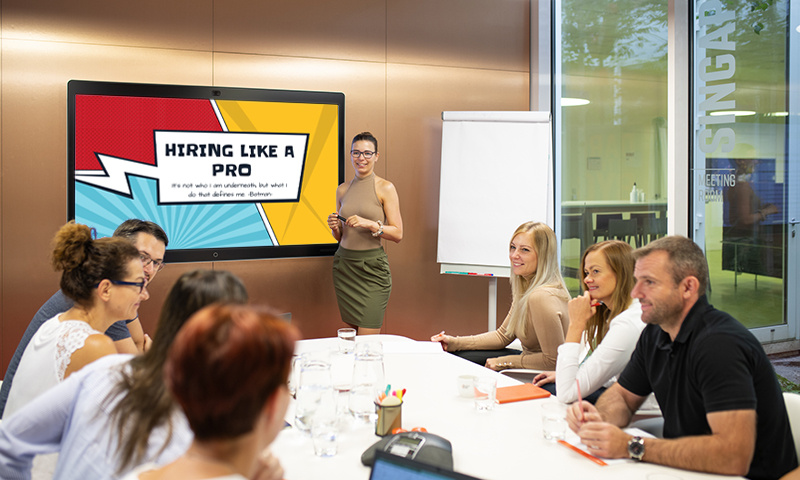If there’s one thing all recruiters and hiring managers will agree on, it’s the importance of being on the same page. Not being in sync with each other regarding best hiring practices can be incredibly frustrating, messy, and time-consuming. Naturally, the more people involved in the hiring process, the more diverse the opinions about how to do it.
To make this process much easier, we have designed new hiring training. Since our R&D department is manager-less, all of our engineers are involved with the hiring process, making the challenge of ‘being in sync’ quite an ambitious goal.
The training feedback has been really positive, so it’s now time for us to share what we created with you. You can use this information as inspiration or as a foundation for building your own training.
WHY DO WE NEED NEW TRAINING?
Previously, we used to have ‘Hiring Manager Training’, which was focused mostly on the hard data and involved information about the labor market, legal boundaries for hiring, and practical interviewing skills. However, despite this training, we still often found ourselves with differing opinions on best hiring practices, what we look for in our candidates, and how to test that efficiently and fairly.
Is being a good value fit more important than having hard skills?
Is it better to hire quickly and see how people perform during a trial period, or should we take our time and carefully choose whom to hire?
How will we collect feedback?
Are we fans of practical tests or not?
These questions have been repeatedly discussed with various outcomes depending on who was discussing them. The recruitment team felt that we needed to carve out ‘Y Soft’s hiring best practices.’ A couple of months ago, we implemented an ATS, which introduced new ways of collaborating and thinking about hiring. We needed to create an opportunity for sharing best practices, and we knew that if we want the people to use it, then we can’t do it through written processes and policies.
PUTTING THE TRAINING TOGETHER
To create the materials, we worked simultaneously on a written document and a PowerPoint presentation. However, we had to try not to get too enthusiastic about the graphics and visuals before having solid content.
THE RESULT
- 2 PowerPoint Decks – one is officially branded, the other one is a bit more fun and both include speaker notes
- Hiring Handbook – this pdf guide contains key information and important links to various policies, materials, and recourses related to hiring and is handed out to attendees
- Speaker Notes – a transcript for trainers. This contains a word-for-word overview of the training session, including speaker notes, tips, and suggested session timings
- Training videos – for those who are unable to attend live training, we have videos available
“I really appreciate the handbook, and I enjoyed the interactive format. There was not much space for passive listening.”
“The training is cool in the time given, but I’d like to have a follow-up session that includes R&D-specific case studies so we can discuss them.”
TIPS & TRICKS
Include practical tasks and activities requiring active participation. This always helps to keep the attendees engaged.



